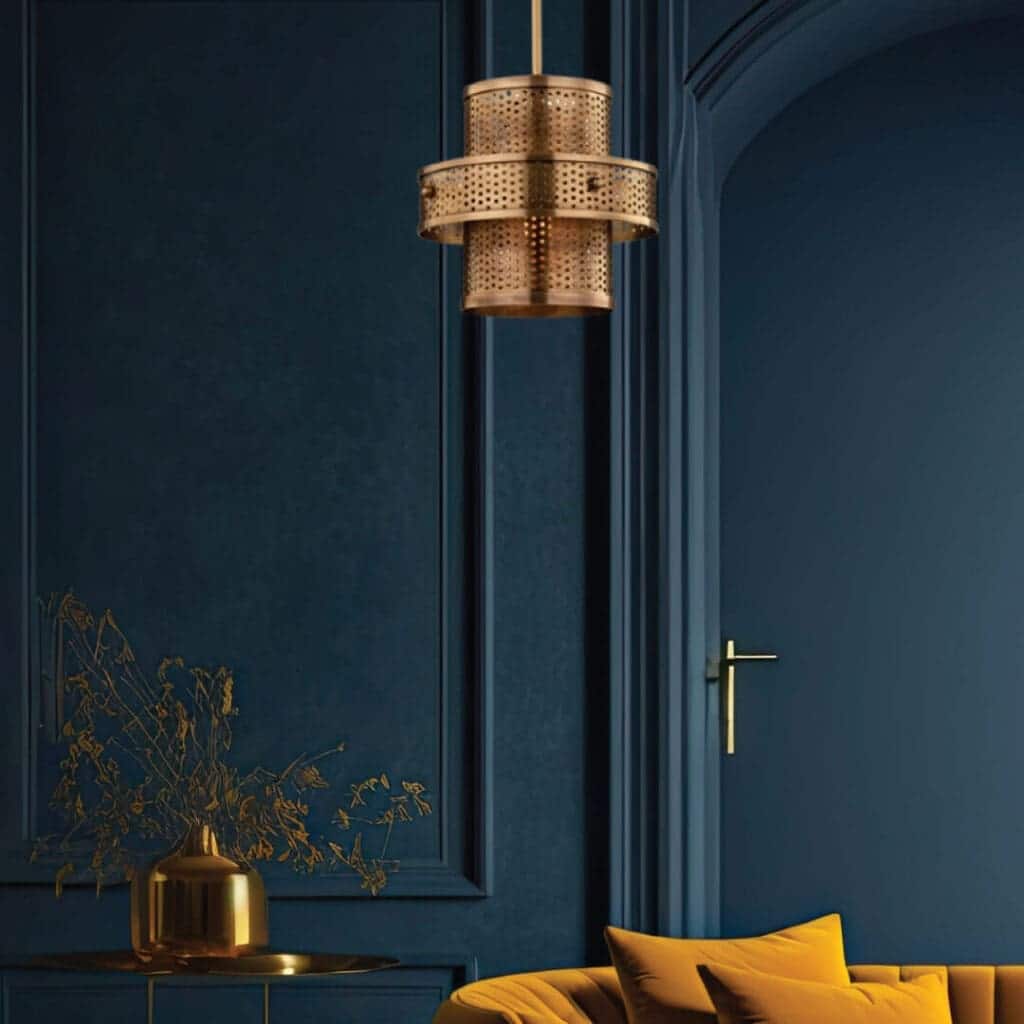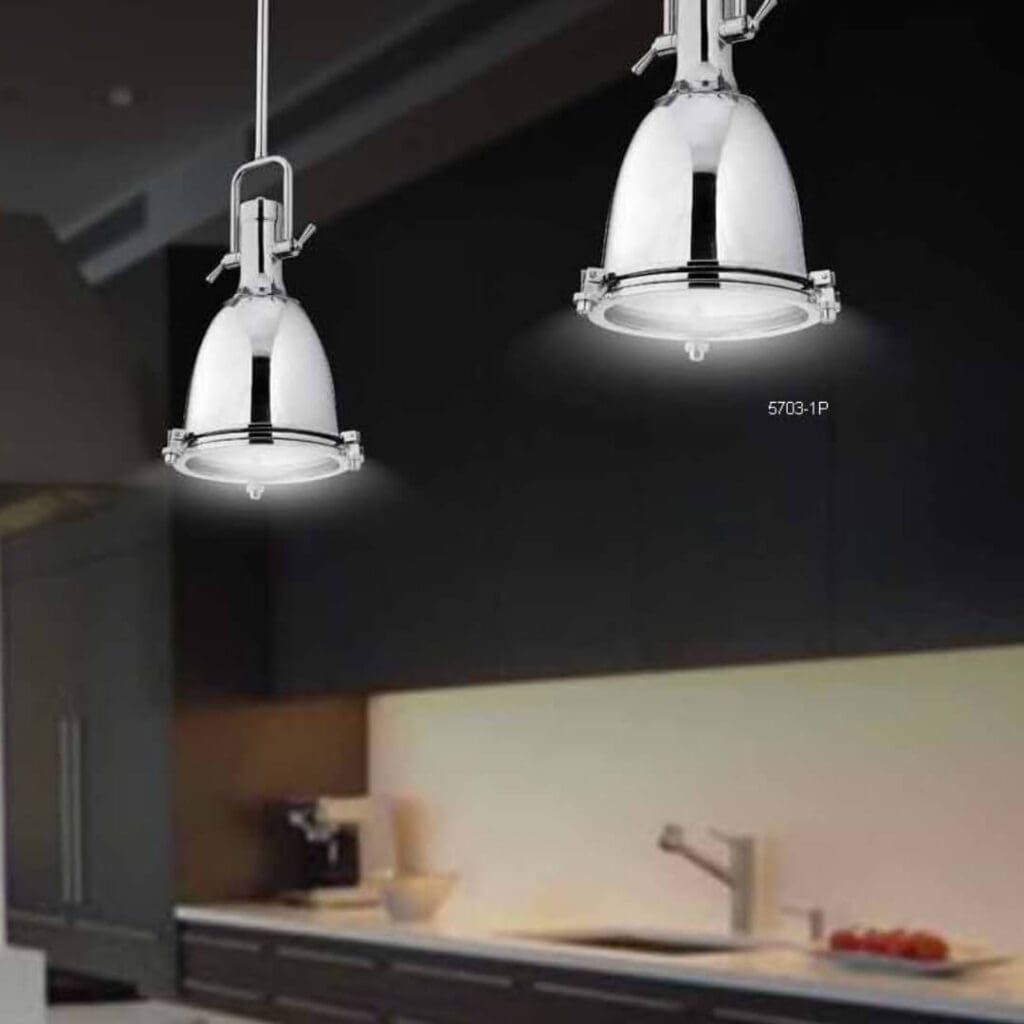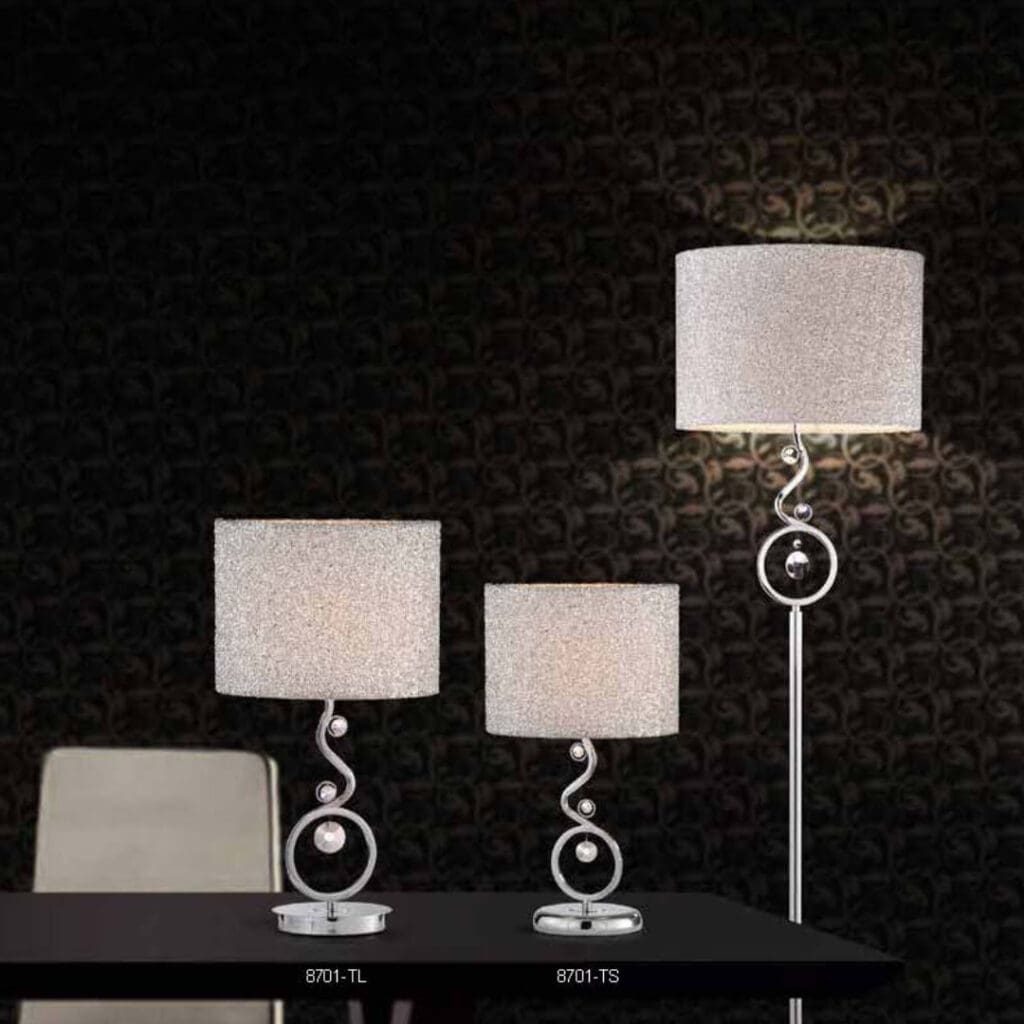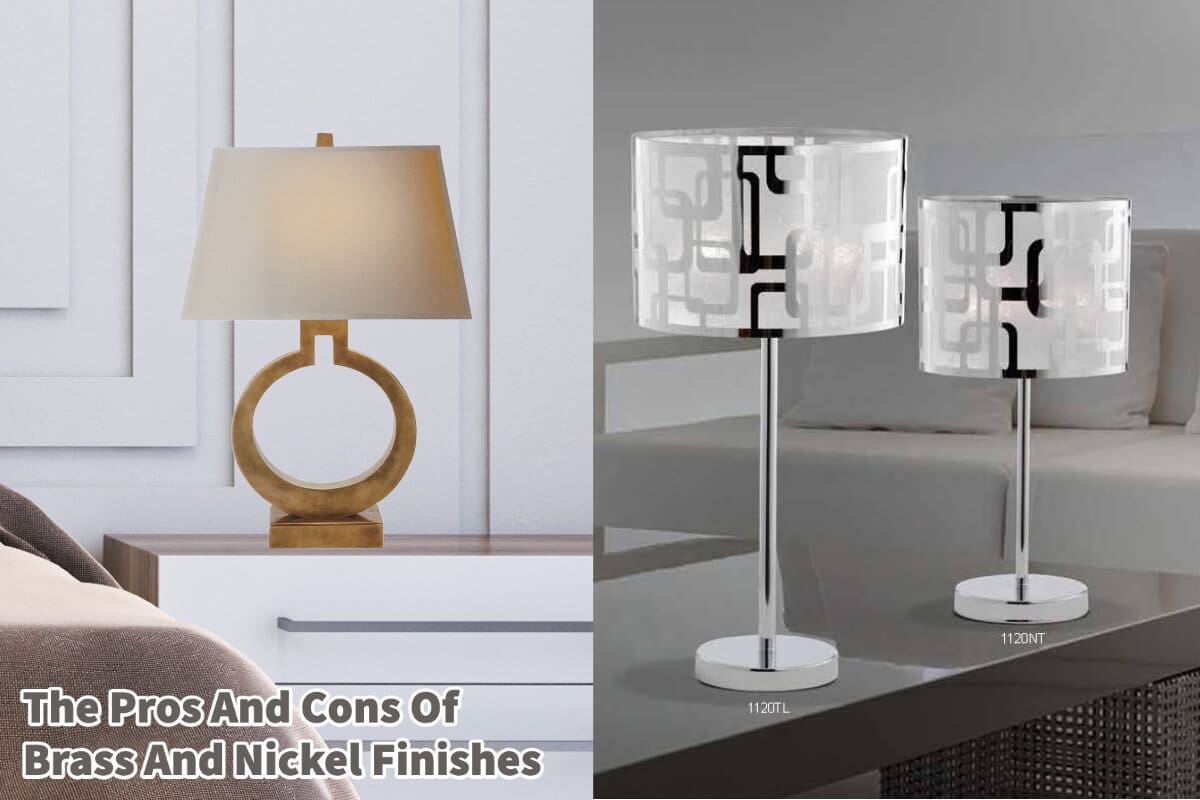Nickel and brass are two finishes that are popular in home decor and home furnishing. Those finishes are now considered to be classic metal finishes.
Brass and nickel finishes have been popular choices for home décor for centuries. They offer various colors, finishes, and textures that add elegance and luxury to any home. However, like any other material, they also come with their own set of pros and cons. Read on as we delve into the qualities and details of brass and nickel finishes, list their pros and cons, and explain their differences.
Table of Contents
- What Is The Brass Finish?
- What Is The Nickel Finish?
- Differences Between Brass And Nickel Finishes
- Frequently Asked Questions About Brass and Nickel Finishes
- Related Content
What Is The Brass Finish?
Brass is an alloy made by combining copper and zinc. The exact amount of copper and zinc can vary, giving brass various colors and finishes.
The most standard brass finishes include yellow, red, and bronze. Brass is known for its durability, corrosion resistance, and easy workability.
It is also relatively inexpensive, making it a popular choice for hardware, light fixtures, and decorative objects.

Below are some of the pros and cons of using a brass finish.
Pros Of Brass Finishes
- Durability: Brass is a hard-wearing material that can withstand regular use without showing wear and tear.
- Low maintenance: Brass requires minimal maintenance and can be cleaned easily with a soft cloth and a mild detergent.
- Corrosion resistance: Brass is resistant to corrosion and can withstand exposure to air, water, and other elements.
- Easy to work with: Brass is a relatively soft material that can be easily shaped and molded to fit different designs and styles.
- Affordable Compared to Gold: Brass is relatively inexpensive compared to some other more expensive metals as gold, making it a popular choice for those wanting a gold finish.

Cons Of Brass Finishes
- Tendency to tarnish: Brass can tarnish over time, especially when exposed to air and moisture or when not treated with a proper top coat. This can give it a dull appearance.
- Limited color options: While brass comes in various colors and finishes, the options are still somewhat limited compared to other materials.
- Not suitable for high-heat applications: Brass is not ideal for high-heat applications, as it can melt or deform at high temperatures.
- Can discolor over time: Brass finishes can discolor, especially when exposed to sunlight or other environmental factors.
What Is The Nickel Finish?
Nickel is a silver-white metal often used to coat other metals, such as brass. Nickel finishes can come in various colors and textures, from polished to brushed to satin.
Nickel is known for its durability, corrosion resistance, and sleek appearance. It is famous for hardware, faucets, and other decorative objects.

Below are some of the pros and cons of a nickel finish:
Pros Of Nickel Finishes
- Durability: Nickel is a hard-wearing metal that can withstand regular use without showing wear and tear.
- Corrosion resistance: Nickel is resistant to corrosion and can withstand exposure to air, water, and other elements.
- Sleek appearance: Nickel has a sleek, modern appearance that can add a touch of sophistication to any home décor.
- Versatile: Nickel can be used in various applications, from hardware to faucets to decorative objects.
- Easy to maintain: Nickel requires minimal maintenance and can be easily cleaned with a soft cloth and mild detergent.

Cons Of Nickel Finishes
- Higher cost: Nickel finishes can be more expensive than other finishes, such as chrome.
- Prone to scratches: While nickel is a hard-wearing metal, it can still be prone to scratches and scuffs.
- Not suitable for high-heat applications: Nickel is not suited for high-heat applications as it has a relatively low melting point.
- Can tarnish: While Nickel is resistant to corrosion, it can still tarnish over time, especially when exposed to acidic or alkaline substances or is not treated with a proper top coat.
Differences Between Brass And Nickel Finishes
While both brass and nickel finishes offer a range of pros and cons, they have some critical differences. For example, brass tends to have a warmer, more traditional appearance, while Nickel has a cooler, more modern look.
Brass is also more affordable and easier to work with but more prone to tarnishing and discoloration. On the other hand, Nickel is more durable and resistant to scratches, but it can be more expensive and requires professional installation for specific finishes.
How To Tell The Difference Between Brass And Nickel Finishes
If you’re trying to determine whether a piece of hardware or decorative object is made of brass or has a nickel finish, there are a few key factors to look for:
- Color: Brass tends to be warmer and yellowish, while Nickel has a silver-white appearance.
- Weight: Brass is generally heavier than Nickel due to its copper content.
- Texture: Brass often has a slightly rougher texture than Nickel, which can feel smoother and more polished.
- Sound: When tapped lightly, brass will produce a higher-pitched sound than Nickel, which has a lower tone.
- Magnetism: Brass is not magnetic, while Nickel can be slightly magnetic, depending on its composition.
Brass and nickel finishes offer a range of options for home décor, each with its own set of pros and cons. By understanding the qualities and differences between these two finishes, you can make an informed decision when choosing the suitable material for your home décor.
Please get in touch with Mondoro if you want home decor and home furnishing products made from brass or nickel.
To learn more about how Mondoro can help you create, develop, and manufacture excellent home decor and home furniture products – in nickel or brass – don’t hesitate to contact me, Anita. Check out my email by clicking here or become a part of our community and join our newsletter by clicking here.
Mondoro gives out a FREE Lookbook to anyone interested. You can receive a copy of our latest Lookbook by clicking here.
Listen to our Podcast called Global Trade Gal. You can find it on all major podcast platforms. Try out listening to one of our podcasts by clicking here.
Subscribe to our Mondoro Company Limited YouTube Channel filled with great videos and information by clicking here.
Frequently Asked Questions About Brass and Nickel Finishes
Is brass hypoallergenic?
Brass is not considered hypoallergenic, as it can contain traces of Nickel or other allergenic metals. Avoid prolonged contact with brass if you have sensitive skin or a metal allergy.
Can brass be polished to a high shine?
Yes, brass can be polished to a high shine using a brass cleaner or a mixture of vinegar and salt. However, polished brass may require more maintenance to prevent tarnishing and discoloration.
Can nickel finish rust?
WNickelickel is corrosion-rNickelnt; nickel finishes can rust or tarnish over time, especially when exposed to acidic or alkaline substances.
What is the difference between lacquered and unlacquered brass?
Lacquered brass has a protective coating that helps prevent tarnishing and discoloration, while unlacquered brass will develop a natural patina over time. Lacquered brass may require less maintenance, but it can also limit the options for cleaning and polishing.
Can nickel finishes be painted over?
Yes, nickel finishes can be painted using a high-quality metal primer and paint. However, painting over nickel may affect its integrity and durability over time.
What is the difference between polished nickel and chrome?
Polished nickel has a warmer, Natural appearance than chrome, with a cooler, more reflective surface. Polished nickel may also be more expensive than chrome, depending on the manufacturer and finish.
Can brass and nickel finishes be mixed in the same room?
Yes, brass and nickel finishes can be nickel in the same room as long as they complement each other and create a cohesive design. Mixing metals can add depth and interest to a room, but it is essential to consider the overall aesthetic and balance of the space.
Can brass and nickel finishes be used outdoors?
While brass and nickel are both resistant to corrosion and weathering, they may not be suitable for prolonged outdoor use. Exposure to sunlight, humidity, and other environmental factors can cause tarnishing and discoloration.
What is the difference between solid brass and brass-plated finishes?
Solid brass is made entirely of brass, while brass-plated finishes are made by coating a base metal with a layer of brass. Solid brass is generally more durable and resistant to tarnishing than brass-plated finishes, but it may also be more expensive.
Related Content
Which Is Better, Nickel Or Brass?
Deciding which is better, nickel or brass, is like deciding if black is a better color than white; both black and white are valuable colors.
Nickel and brass are both excellent metal choices. Brass is a golden yellow, and Nickel is silver or almost grey. Both metals can be plated onto another metal or material, and brass can also be solid brass.
You can discover more by reading Which Is Better Nickel Or Brass? by clicking here.
Are Brass And Nickel The Same?
Both Brass and Nickel are metal finishes that can be electroplated or plated. They contain copper and can be made into unique, exciting looks and finishes. Because of their versatility, they remain popular metals and finishes for various products and uses.
You can find out more by reading our blog Are Brass And Nickel The Same? by clicking here.
Brass Plated Vs. Chrome Plated Metals Explained
Brass and chrome are plated on metal using the same electroplating method, but the look and finish are different. Brass will be warm golden, whereas Chrome will look like shiny silver metal. Both are excellent electroplated treatments, and choosing one can also depend on the look you want for a specific product.
You can discover more by reading Brass Plated Vs. Chrome Plated Metals Explained by clicking here.

